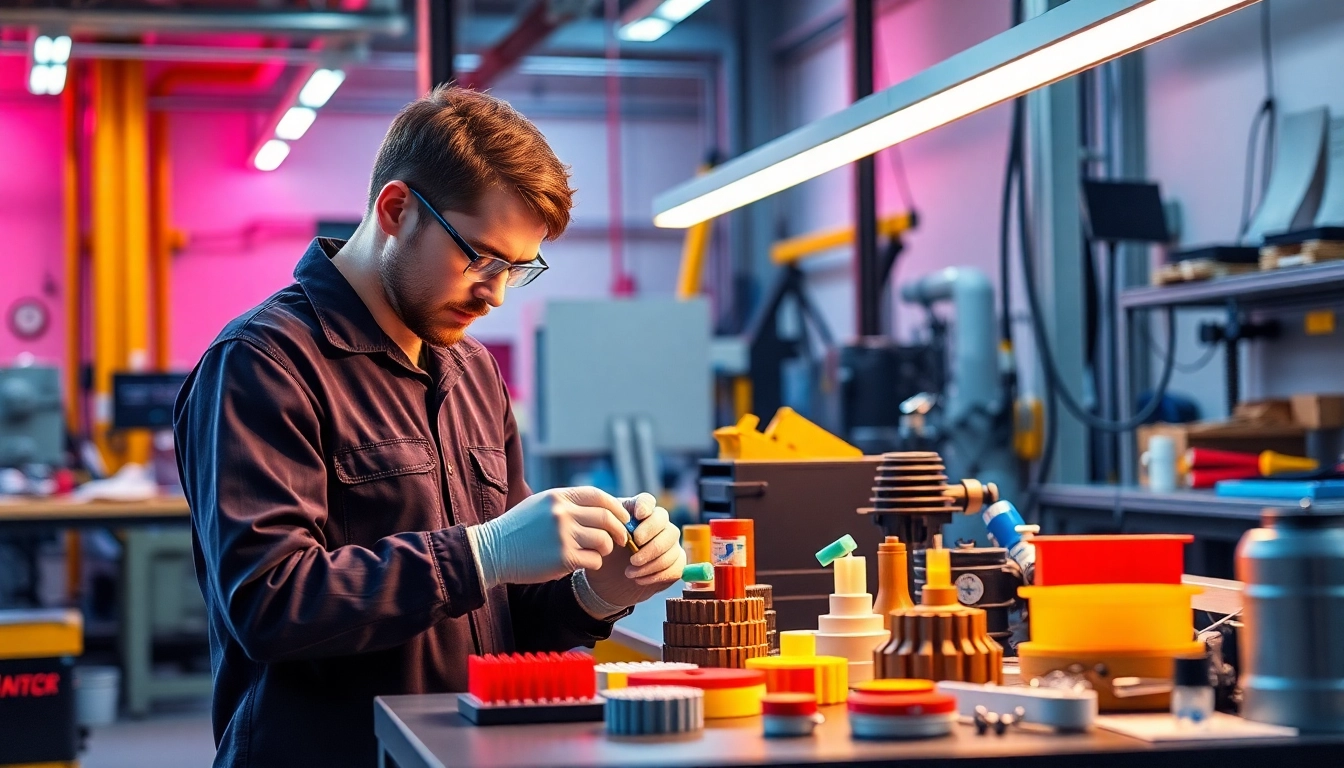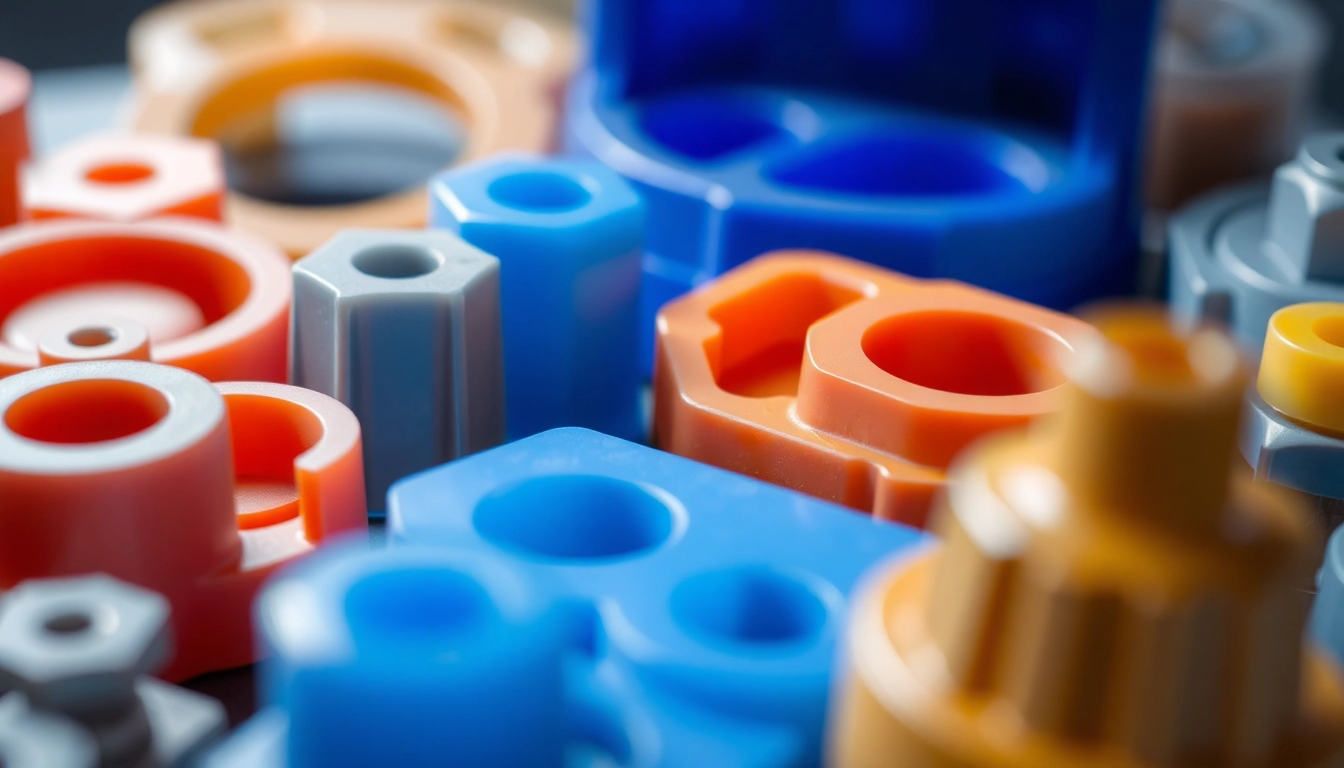Understanding Injection Molding
Injection molding is a pivotal manufacturing process utilized for producing parts by injecting molten material into a mold. This method is extensively employed in the manufacturing of plastic components, allowing for the mass production of high-quality and intricate parts. With its efficiency and versatility, many businesses rely on an injection molding company to meet their production needs.
What is Injection Molding?
Injection molding involves several stages, starting with the melting of raw material—typically plastic—followed by injecting the material into a pre-made mold. Once in the mold, the material cools and solidifies, taking on the shape of the mold cavity. This process can produce a wide variety of products, ranging from small components like caps and closures to larger items like automotive parts.
History and Evolution of Injection Molding
The origins of injection molding can be traced back to the 19th century, with the first patent for an injection molding machine given in 1872. Originally, the process utilized materials such as ivory and tortoiseshell. However, the development of synthetic plastics in the mid-20th century propelled the injection molding industry into unfathomable heights, giving birth to a vast array of applications across various sectors.
Today, advances in technology, including computer-aided design (CAD) and 3D printing, continue to refine the injection molding process, fostering innovation and improving efficiency. The evolution of injection molding is a testament to its adaptability and importance in modern manufacturing.
Key Benefits of Injection Molding
Injection molding offers numerous advantages, including:
- High Production Speed: Once the mold is created, producing parts can happen rapidly, allowing for high-volume manufacturing.
- Cost-Effectiveness: Economies of scale come into play, as the cost per unit decreases with larger production runs.
- Consistency: This process guarantees consistent quality and dimensionally accurate parts, critical for industries such as automotive and aerospace.
- Material Variety: A wide range of materials can be used, including thermoplastics, thermosetting plastics, and even metals.
- Design Flexibility: Injection molding supports complex geometry and intricate designs that might be difficult or impossible with other manufacturing methods.
Choosing an Injection Molding Company
Selecting the right injection molding partner is essential for successfully bringing a product to market. However, this can be a daunting task given the multitude of companies that offer similar capabilities. Taking the time to evaluate and consider various factors will help ensure a successful partnership.
Factors to Consider When Selecting a Company
When searching for an injection molding company, it is crucial to consider the following factors:
- Experience and Expertise: Look for companies with a proven track record in your specific industry.
- Capabilities: Assess the company’s ability to handle the complexity of your projects, including mold-making, prototyping, and customization options.
- Technological Investment: Companies that invest in the latest technology can usually deliver higher-quality products more efficiently.
- Geographic Location: Proximity can influence shipping costs and lead times, so consider local companies first.
- Client Testimonials: Research reviews and case studies to understand previous client satisfaction and quality of work.
Evaluating Quality Assurance Practices
Quality assurance is paramount in injection molding. A reliable company must have robust quality assurance practices in place, including ISO certifications, regular inspections, and test reports. Consider the following practices when evaluating potential partners:
- Process Controls: Ensure the company has defined processes for monitoring and controlling production.
- Material Testing: Ask about their approach to testing raw materials for compliance and performance before use.
- Final Product Inspection: Look for companies that perform detailed inspections of finished parts to ensure they meet specifications.
- Continuous Improvement: Ideal partners should engage in a continuous improvement process, regularly refining their methods for better quality outputs.
Understanding Pricing Structures and Quotes
Pricing in injection molding can vary widely based on several factors, including mold complexity, material costs, production volume, and lead time. Here are some important points to consider:
- Initial Quotation: Always get detailed quotations that outline all costs involved in the project, including design, manufacturing, and shipping.
- Production Costs: Understand how long the initial mold will last and how this affects your costs, especially for high-volume production runs.
- Negotiation: Don’t hesitate to negotiate terms based on production volume or a long-term contract to get better pricing.
- Hidden Costs: Be aware of potential hidden costs such as maintenance, storage, and logistics fees that might arise later in the process.
Industries Benefiting from Injection Molding
Injection molding is foundational in numerous industries, each leveraging the efficiency and versatility of the process to produce essential components. Below, we explore some of the key sectors that benefit from injection molding.
Healthcare and Medical Devices
The healthcare sector relies heavily on injection molding to produce precision components required for medical devices, from surgical instruments to disposable syringes. Given the stringent regulations surrounding medical products, it is crucial for injection molding companies to adhere to strict quality assurance protocols and standards:
- Compliance: Companies must comply with regulatory agencies like the FDA to ensure safety and efficacy.
- Cleanroom Manufacturing: Many medical devices require production in cleanroom environments to prevent contamination.
- Custom Solutions: Clinics and medical professionals often seek customized components for unique applications.
Consumer Goods and Household Products
From kitchen utensils to toys, consumer goods are frequently produced using injection molding. This sector benefits particularly because of:
- Design Flexibility: Custom molds enable creative designs and innovative features.
- Durable Materials: The ability to produce items in various robust materials enhances product longevity and usability.
- Cost Efficiency: Rapid production capabilities mean that brands can respond quickly to changing consumer demands.
Automotive Applications
The automotive industry uses injection molding for producing various components, such as dashboards, door panels, and engine covers. Key advantages in this sector include:
- Weight Reduction: Using lightweight materials helps improve fuel efficiency and performance.
- Complex Shapes: Injection molding allows for intricate designs that meet the aesthetic and functional requirements of modern vehicles.
- Scalability: The ability to scale production easily enables manufacturers to meet varying demand levels efficiently.
Working with Your Injection Molding Partner
Effective collaboration with your injection molding partner can significantly influence the success of your projects. Building a strong relationship through clear communication and mutual understanding will lead to better outcomes.
The Importance of Communication and Collaboration
Open dialogue between you and your injection molding partner is essential. Discussions should include:
- Project Specifications: Clearly outline your requirements, including tolerances, material choices, and production volumes.
- Timeline Expectations: Establish realistic timelines for production, revisions, and final delivery.
- Feedback Loops: Create mechanisms for regular feedback and updates to avoid misunderstandings and adhere to the project timeline.
Design Considerations for Successful Projects
The design phase is critical for the eventual success of produced components. Key design considerations include:
- Mold Design: Mold design should facilitate easy ejection of parts while maintaining the integrity of complex geometries.
- Material Selection: Choosing the appropriate material based on desired characteristics such as strength, flexibility, and thermal resistance is vital.
- Prototyping: Utilizing rapid prototyping can help visualize and adjust designs before full-scale production begins.
Managing Timelines and Production Requests
Timely communication regarding production requests and timelines can make or break a project:
- Advance Planning: Providing your partner with forecasts for demand can help in aligning production schedules.
- Buffer Times: Include buffer times in every project phase to account for unexpected delays.
- Regular Check-ins: Schedule periodic progress updates to stay informed about the project status and promptly address potential issues.
Future Trends in Injection Molding
The injection molding industry is evolving rapidly, with new technologies and practices emerging that promise to shape its future. Awareness of these trends is essential for companies looking to remain competitive.
Technological Innovations on the Horizon
Emerging technologies are redefining injection molding processes:
- Industry 4.0: The integration of IoT, automation, and data analytics is helping companies optimize manufacturing efficiency and minimize waste.
- 3D Printing: Innovations in 3D printing technology are beginning to influence mold design and prototyping methods, streamlining production cycles.
- Advanced Materials: Research into new materials, including bio-based plastics and composites, is creating options that are both environmentally friendly and high-performing.
Sustainability Practices in Injection Molding
Sustainability is becoming a critical focus as consumers and regulations increasingly demand environmentally responsible manufacturing practices. Key initiatives include:
- Recyclable Materials: Utilizing materials that are recyclable or biodegradable helps reduce environmental impact.
- Energy Efficiency: Many companies are investing in energy-efficient machines and practices to lower power consumption during production.
- Waste Reduction Strategies: Implementing methods to minimize waste during production is essential for sustainable practices.
Market Demand and Growth Predictions
The future of the injection molding market looks promising, driven by the increasing demand for high-quality manufacturing across various sectors. Anticipated trends include:
- Increased Demand in Emerging Markets: As manufacturing capacities grow in emerging markets, a rise in demand for injection-molded products is expected.
- Technological Advancements: Continuous advancements in technology will foster innovation, leading to more efficient processes and high-quality output.
- Diversification of Applications: New applications of injection molding in sectors such as electronics and renewable energy are likely to drive growth in the coming years.



